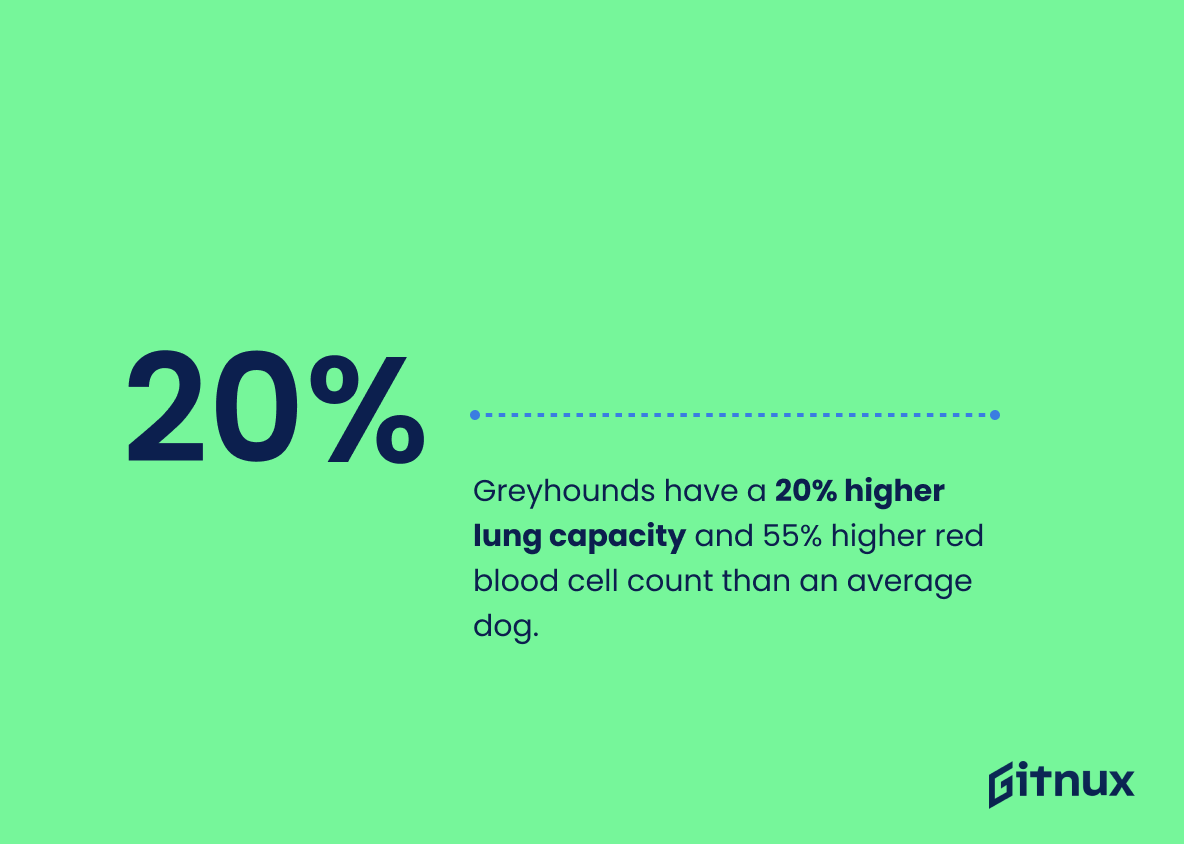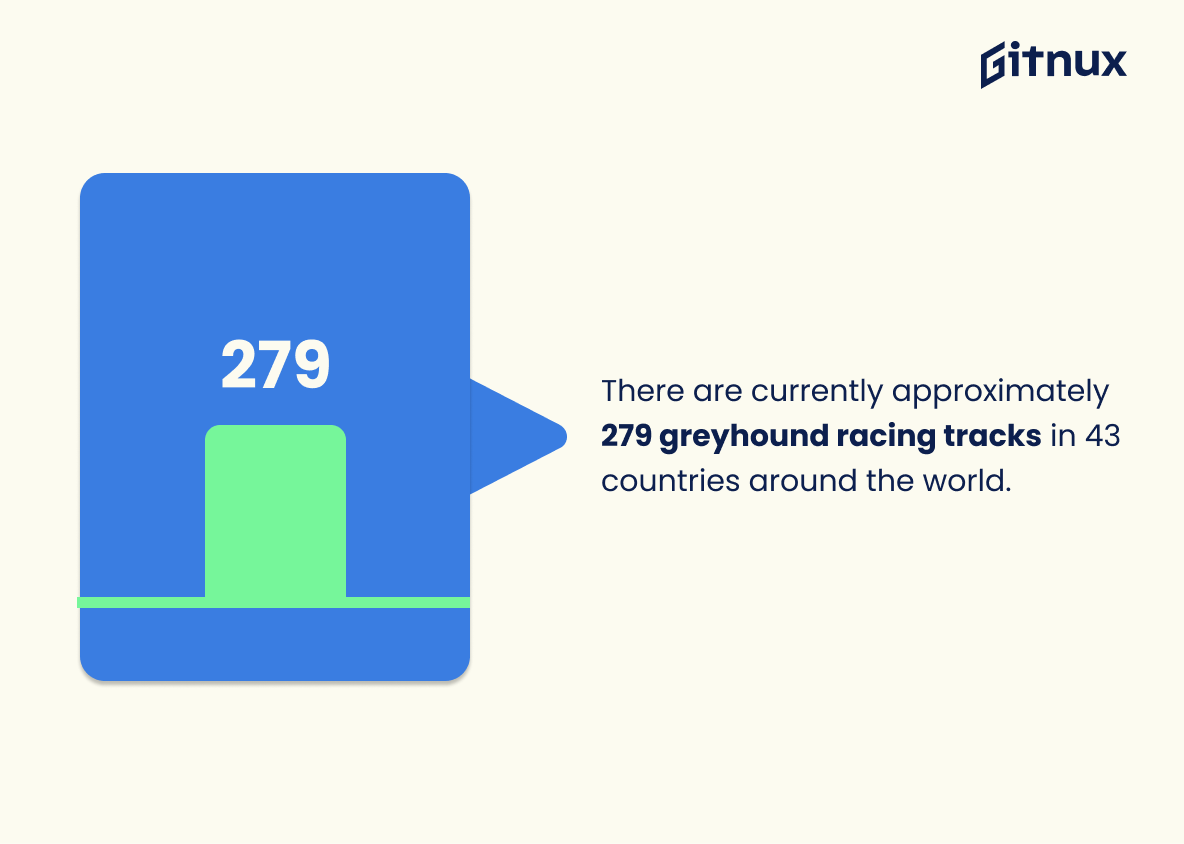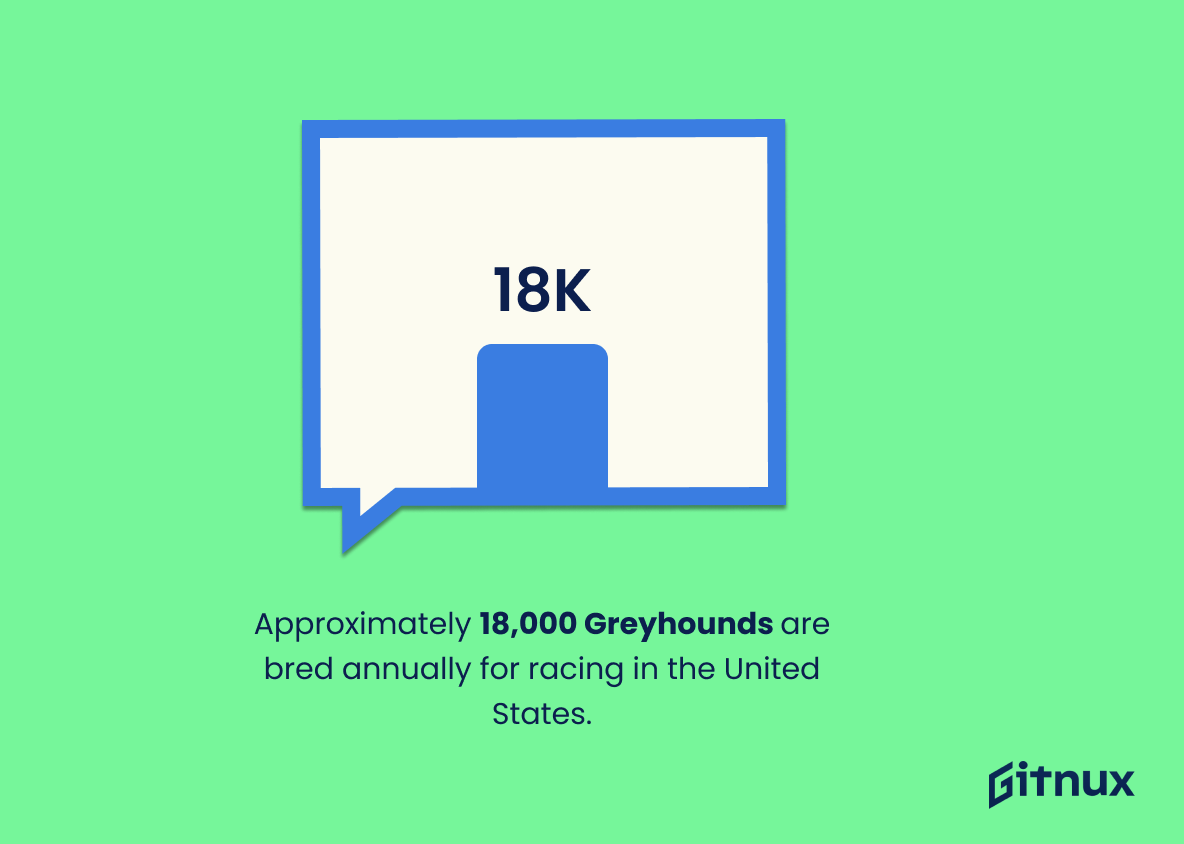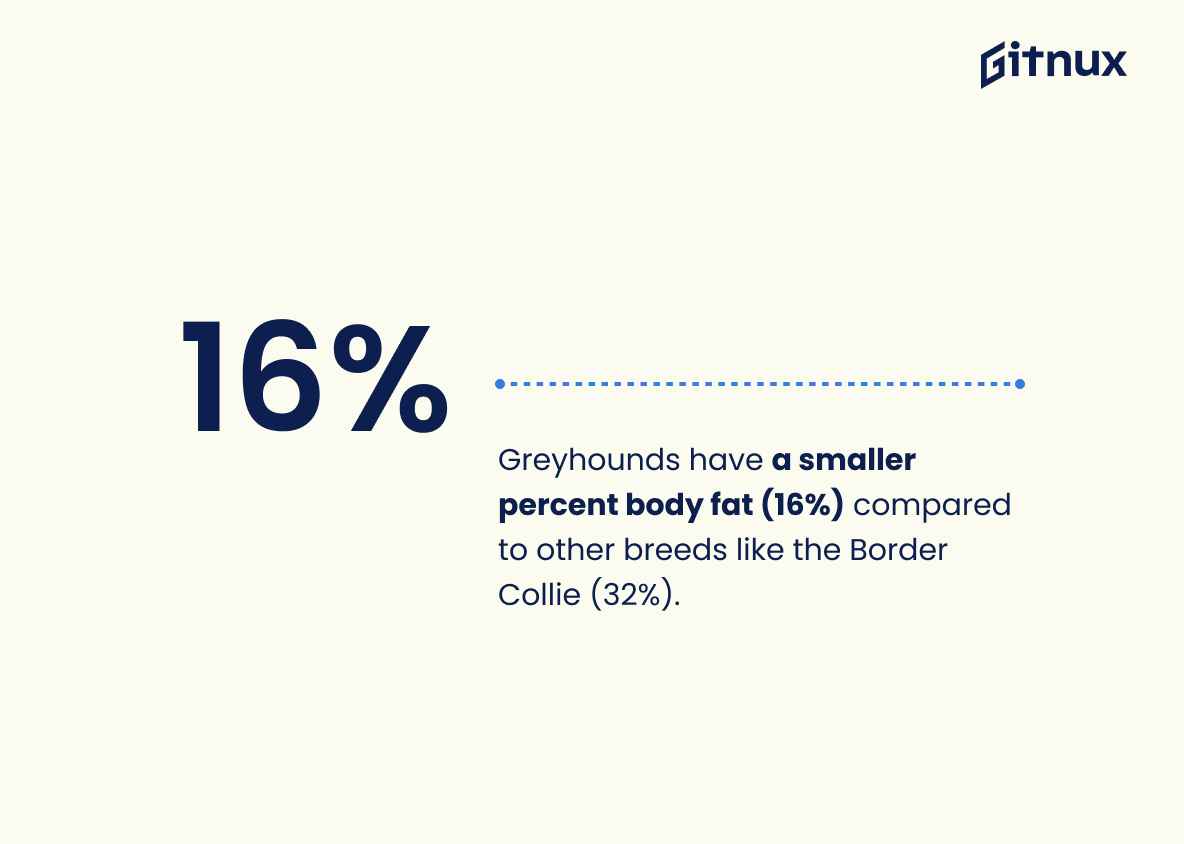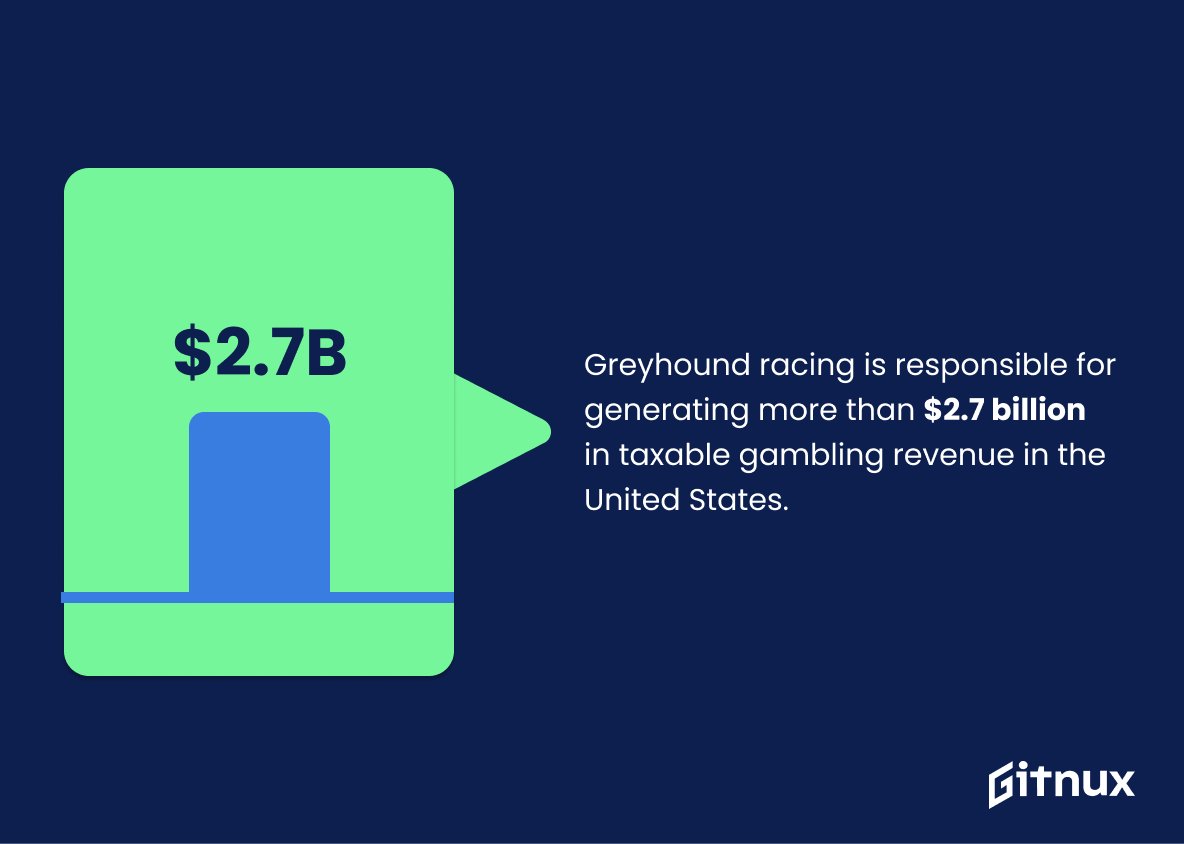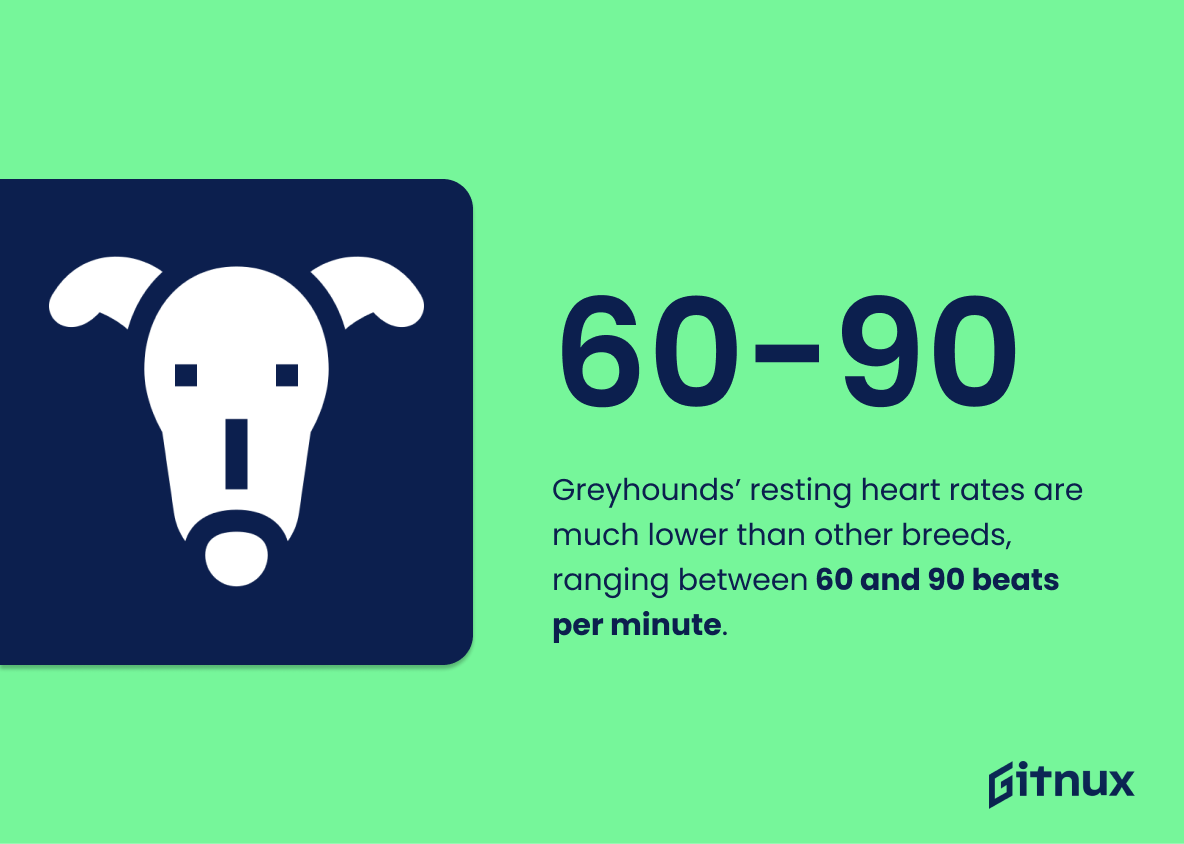Are you curious about the amazing Greyhound breed? From their incredible speed to their unique physical characteristics, there is a lot to learn about these majestic animals. In this blog post, we will explore 20 fascinating statistics related to Greyhounds that may surprise and even astound you. We’ll look at everything from how fast they can run and what kind of bite strength they have, all the way down to where in the world greyhound racing is still legal. So buckle up for an exciting journey into learning more about one of nature’s most remarkable creatures – The Greyhound.
The remarkable speed of Greyhounds makes them stand out among other breeds of dogs, with their ability to reach speeds of up to 45 miles per hour. This impressive statistic is a testament to the power and agility of these majestic animals, and is an important part of understanding the Greyhound breed.
Greyhounds have a significantly lower prevalence of hip dysplasia (1.82%) compared to other breeds.
This statistic is a testament to the Greyhound’s remarkable physical health. With a prevalence of hip dysplasia that is significantly lower than other breeds, it is clear that Greyhounds are a breed that is well-suited for a long and healthy life.
Greyhound Statistics Overview
Most Greyhounds retire from racing careers between 2 to 5 years of age.
This statistic is significant in the context of a blog post about Greyhound Statistics because it provides insight into the average lifespan of a Greyhound’s racing career. Knowing the average age at which Greyhounds retire from racing can help inform decisions about adoption and provide a better understanding of the life of a racing Greyhound.
Since 1987, more than 100,000 retired Greyhounds have been placed in homes in North America.
This statistic is a testament to the success of Greyhound adoption programs in North America since 1987. It shows that, despite the challenges of finding homes for retired Greyhounds, these programs have been able to provide a safe and loving environment for over 100,000 of these animals. This statistic is a reminder of the importance of these programs and the impact they have had on the lives of so many Greyhounds.
Greyhounds have a 20% higher lung capacity and 55% higher red blood cell count than an average dog.
This statistic is a testament to the Greyhound’s remarkable physiology, demonstrating their superior lung capacity and red blood cell count compared to the average dog. This is especially important in the context of a blog post about Greyhound Statistics, as it highlights the breed’s unique physical capabilities.
There are currently approximately 279 greyhound racing tracks in 43 countries around the world.
This statistic is a testament to the global reach of greyhound racing. It shows that the sport is enjoyed in many countries, with tracks located in a variety of places. This statistic is a reminder that greyhound racing is a popular and well-loved sport, and that it is enjoyed by people from all over the world.
Greyhound racing is banned in 41 states in the United States.
This statistic is a stark reminder of the widespread opposition to Greyhound racing in the United States. It highlights the fact that a majority of states have taken a stance against the sport, indicating that it is not a popular activity in the country.
Racing greyhounds can cost up to $20,000 to train before they even begin racing.
This statistic is a stark reminder of the financial commitment required to get a racing greyhound ready for the track. It highlights the significant investment that owners must make in order to have a successful racing career, and the potential risks associated with such a venture. It also serves as a reminder of the dedication and commitment that goes into training a greyhound, and the importance of proper care and maintenance for these animals.
Approximately 18,000 Greyhounds are bred annually for racing in the United States.
This statistic is a stark reminder of the prevalence of Greyhound racing in the United States. It highlights the sheer number of Greyhounds bred each year for the purpose of racing, and serves as a reminder of the need for greater awareness and advocacy for these animals.
Greyhounds have a smaller percent body fat (16%) compared to other breeds like the Border Collie (32%).
The fact that Greyhounds have a significantly lower body fat percentage than other breeds like the Border Collie is an important statistic to consider when discussing Greyhound Statistics. This lower body fat percentage means that Greyhounds have a leaner, more athletic physique, which can be beneficial for activities such as running and agility. Additionally, this lower body fat percentage can help Greyhounds stay healthy and active for longer periods of time.
Greyhound racing is responsible for generating more than $2.7 billion in taxable gambling revenue in the United States.
This statistic is a testament to the economic impact of Greyhound racing in the United States. It shows that the sport is not only a source of entertainment, but also a major contributor to the nation’s taxable gambling revenue. This highlights the importance of Greyhound racing in the US economy and its potential to generate significant revenue for the country.
There are about 196 Greyhound racing facilities in Australia.
This statistic is a telling indication of the prevalence of Greyhound racing in Australia. It shows that the sport is still alive and well in the country, with a large number of facilities dedicated to the activity. This statistic is a key piece of information for anyone looking to gain a better understanding of the sport’s popularity in Australia.
Greyhounds’ resting heart rates are much lower than other breeds, ranging between 60 and 90 beats per minute.
The fact that Greyhounds’ resting heart rates are much lower than other breeds is an important statistic to consider when discussing Greyhound health. This low heart rate is indicative of the breed’s natural athleticism and endurance, making them ideal for activities such as racing and agility. Additionally, this low heart rate can be beneficial for Greyhounds’ overall health, as it can help reduce the risk of heart-related issues.
Conclusion
Greyhounds are an incredibly unique breed of dog, with a wide range of impressive physical and mental characteristics. They have the ability to reach speeds up to 45 miles per hour, making them one of the fastest breeds in existence. Greyhounds also have significantly lower prevalence rates for hip dysplasia than other breeds, as well as a life expectancy that ranges from 10-14 years. Additionally, they possess higher lung capacity and red blood cell count levels compared to average dogs; their bite strength is even 20% stronger than most canines.
The popularity of greyhound racing has led to many tracks being built around the world – there are currently 279 facilities located in 43 countries worldwide – but it’s important to note that 41 states within America have banned this activity due largely in part because training these animals can cost upwards of $20k before they ever race. Fortunately though, since 1987 more than 100k retired greyhounds have been placed into homes across North America thanks largely in part by adoption programs set up specifically for this purpose – with an estimated 90% success rate.
Overall, Greyhounds make wonderful pets who offer companionship and loyalty while providing owners with plenty of exercise opportunities given their incredible speed capabilities. With so much information available about this amazing breed we hope you now feel better informed on all things related to Greyhound statistics.
References
0. – https://www.ncbi.nlm.nih.gov
1. – https://www.greyhoundsaspets.org.nz
2. – https://www.aph.gov.au
3. – https://www.animallaw.info
4. – https://www.grey2kusa.org
5. – https://www.humanesociety.org
6. – https://www.greyhoundhealthinitiative.org
7. – https://www.gracanada.com
8. – https://www.onegreenplanet.org
9. – https://www.smithsonianmag.com
10. – https://www.ofa.org
11. – https://www.akc.org
12. – https://www.vin.com


